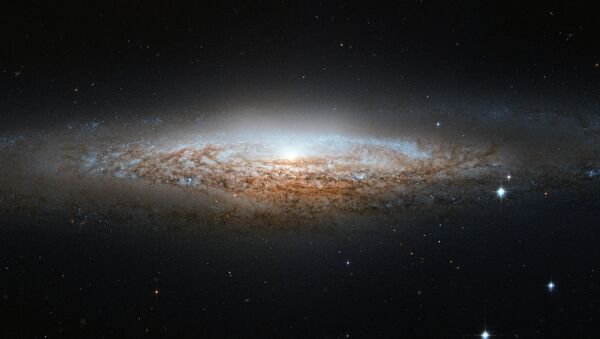According to a newly proposed mechanism of "cosmological collapse," the currently expanding universe will soon stop and retract back in on itself, destroying all matter. The paper, published in Physical Review Letters, posits the new mechanism, not so much to determine the date of The End (which is incidentally, the title of the paper), but to try to imagine a mechanism that takes certain phenomena like dark energy — still poorly understood — into account.
— Tony Padilla (@DrTonyPadilla) September 26, 2014
Another mystery scientists are still trying to square is the current consensus that the universe is not just expanding, but is doing so at an accelerating rate. This led to the proposition of the existence of dark energy, a very low-mass form of energy that comprises 68% of the mass-energy of the universe. (The composition of the rest of the universe, under the standard model, is about 27% is dark matter, and about 5% ordinary matter).
— Stefania G. L. (@Stelygs) March 10, 2015
"The fact that we are seeing dark energy now could be taken as an indication of impending doom, and we are trying to look at the data to put some figures on the end date," one of the paper's authors,Antonio Padilla of the University of Nottingham told Phys.org. "Early indications suggest the collapse will kick in in a few tens of billions of years, but we have yet to properly verify this."
— Universe Today (@universetoday) March 22, 2015
When the universe was thought to be static, before it was discovered to be expanding at an accelerating rate, Albert Einstein proposed a "cosmological constant" as part of his theory of relativity which stood for the energy density of the vacuum of space — the thing keeping the universe from collapsing back in on itself. With the discovery of the universe's expansion, Einstein threw the idea out, but some think dark energy could be that constant.
— Diana Saez (@Dianasaurus) November 9, 2014
"I think we have opened up a brand new approach to what some have described as 'the mother of all physics problems,' namely the cosmological constant problem," Padilla said. "It's way too early to say if it will stand the test of time, but so far it has stood up to scrutiny, and it does seem to address the issue of vacuum energy contributions from the standard model, and how they gravitate."
— Kohei Watanabe (@koheisasian) March 20, 2015
According to this new mechanism, before collapsing in a "Big Crunch," the universe goes through a "slow roll" and then a period of accelerated expansion (which we are currently in). Their model has been unique in that they used a constant "technically natural" slope of about 10-39 which maintains throughout the modelled process, requiring no fine-tuning along the way.
—? (@jordanisbeefy) February 8, 2015
"The 'technically natural' size of the slope controls when the collapse trigger begins to dominate, but was it guaranteed to give us slow roll and therefore the accelerated expansion?" Padilla said. "Naively one might have expected to have to fine-tune some initial conditions to guarantee this, but remarkably that is not the case. The dynamics of vacuum energy sequestering guarantee the slow roll."
— Colin Schmidt (@ColinSchmidt1) June 12, 2014
The physicists say there is still much to be done with the theory, like figuring out how it relates to string theory.
"The present epoch of acceleration may be evidence of impending doom," the paper cautiously concludes. "A detailed analysis to better quantify these predictions is certainly warranted."
— Scott Lucas (@scottrlucas) January 6, 2015


